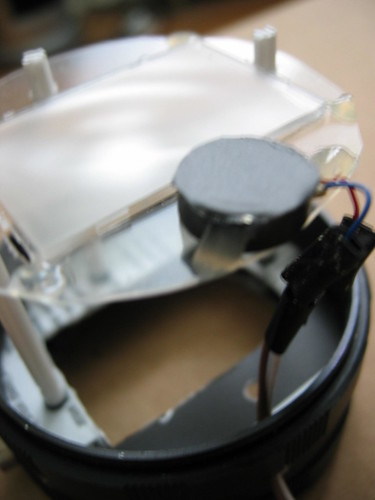
Building the Vibrating Mount
This is the core of the adapter so there will be more detail. The main parts and tools needed:
Canon Ee-A focus screen
3pcs syringe plungers (type used for insulin)
Hot glue gun with sticks
Mechanical Pencil
Plastic card
Scissors
Box cutter or any sharp blade
Metric Ruler
2 solid core wires
Vibrating motor
Drill
Soldering Iron
The Theory
Before we begin lets get some background out of the way. A 35mm adapter needs a condenser and ground glass. In our case the Canon Ee-A focus screen is both in a small package. This tiny piece of plastic has a matte side and a more transparent side. The matte side is what we will use as the ground glass. This side faces to the back of the adapter. The other side is a fresnel pattern that faces to the front. It serves as a condenser, not a great one but better than nothing, to capture the light from the 35mm lens to brighten it up on the ground glass.
Normally, the ground glass needs to be held 46.5mm away from the F-mount on the adapter. But the fresnel piece changes the optics a bit so it should be closer by a few millimeters. We'll adjust this by eye later. If you have access to a collimator then good for you. If you could build one then I applaud you!
Assuming the distance of the focus screen is right, the 35mm lens set on infinity should have a sharp picture for far away objects. This would mean the focus marks on the lens would be fairly accurate as well.
With the above parts this is a static adapter. For daylight this is usually fine with fast lenses. The more you stop down on the lens the grain on the focus screen becomes more visible. There are ways to blur this out in software or you could eliminate this with hardware. To remove the grain you could oscillate or rotate the ground glass. In our case we will use a small vibrating motor to oscillate it.
What's next?
We'll start cutting our initial static mount in the next post.
No comments:
Post a Comment